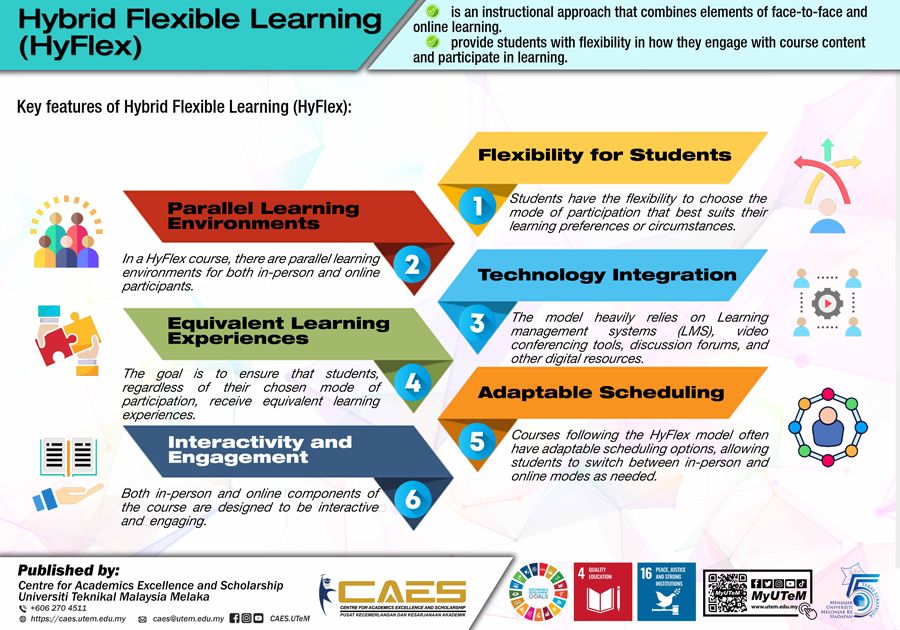INFO@CAES
July 2024

Hybrid Flexible Learning
Hybrid Flexible Learning, often referred to as HyFlex, is an instructional approach that combines elements of face-to-face (in-person) and online learning. The HyFlex model is designed to provide students with flexibility in how they engage with course content and participate in learning activities. It allows students to choose between attending classes in person, participating online, or a combination of both based on their preferences and needs. The goal is to accommodate diverse learning styles, schedules, and circumstances.
Key features of Hybrid Flexible Learning (HyFlex) include:
-
Flexibility for Students:
⦁ Students have the flexibility to choose the mode of participation that best suits their learning preferences or circumstances. For example, they can attend a lecture in person, join the same lecture online in real-time, or access recorded materials later. -
Parallel Learning Environments:
⦁ In a HyFlex course, there are parallel learning environments for both in-person and online participants. This often involves synchronous activities for both groups, such as live lectures, discussions, and collaborative projects. -
Technology Integration:
⦁ The model heavily relies on technology to facilitate online participation. Learning management systems (LMS), video conferencing tools, discussion forums, and other digital resources are often used to support the online component. -
Equivalent Learning Experiences:
⦁ The goal is to ensure that students, regardless of their chosen mode of participation, receive equivalent learning experiences and have access to the same content, assessments, and learning outcomes. -
Adaptable Scheduling:
⦁ Courses following the HyFlex model often have adaptable scheduling options, allowing students to switch between in-person and online modes as needed. This is particularly beneficial for students who may face scheduling conflicts or have external commitments. -
Interactivity and Engagement:
⦁ Both in-person and online components of the course are designed to be interactive and engaging. Instructors may use various strategies to promote interaction, including group activities, discussions, and collaborative projects.
Hybrid Flexible Learning has gained popularity, especially in higher education, as it addresses the diverse needs of students and provides a degree of flexibility in the learning process. It acknowledges that learners have different preferences and circumstances, and it seeks to accommodate those differences while maintaining the integrity of the educational experience.
Mon 29/7/2024 12:55 PM